What is Powerline?
‘Powerline’ is the term commonly used to refer to HomePlug which is described in the industry standard IEEE 1901. Powerline or HomePlug is a technology which provides Ethernet connectivity over existing electrical mains wiring in the home. This allows for the benefits, speed and stability of a wired connection while not having to run additional cabling.
Homeplug certified devices are interoperable between device models and brands. The current standard is known as Homeplug AV2 which supports up to 500Mbps at the physical level. Actual throughput is much less due to protocol overhead and physical impedance such as electrical noise and resistance. (See this article)
Tips
Here are some important tips or considerations to make when implementing a Powerline solution in your network.
The connection rate in which powerline devices can establish depends mainly on the quality of connection between the devices. A good understanding of the electrical system within the building and how it is laid out is key when deploying powerline.
Most importantly try to choose outlets connected with the same phase (Hot wire into the building)
Best ~70% Performance – Outlets on same circuit.
Good ~40% Performance – Outlets on same phase
Poor ~10% Performance – Outlets on different phase
This is because any building will have at least 2 phase wiring. Each outlet may not be connected to the same phase or ‘hot’, in which case the adapters will only be communicating across the common neutral wire rather than across neutral and hot.
If you are unaware of how the circuits in your building are wired – Try disconnecting 1 circuit at a time at the electrical panel and keep note of what electrical outlets turn off, or use a circuit finder to trace each outlet.
Here are a few images to help understand the concept.
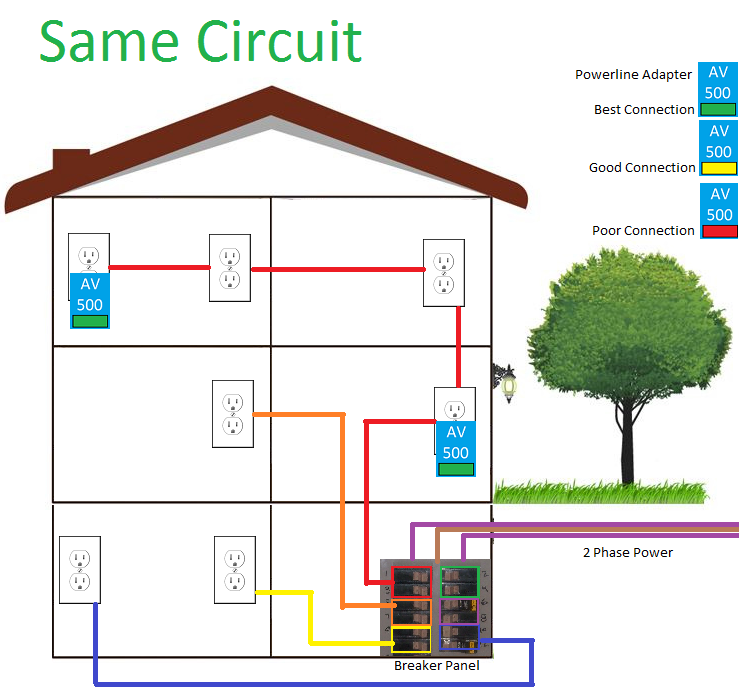

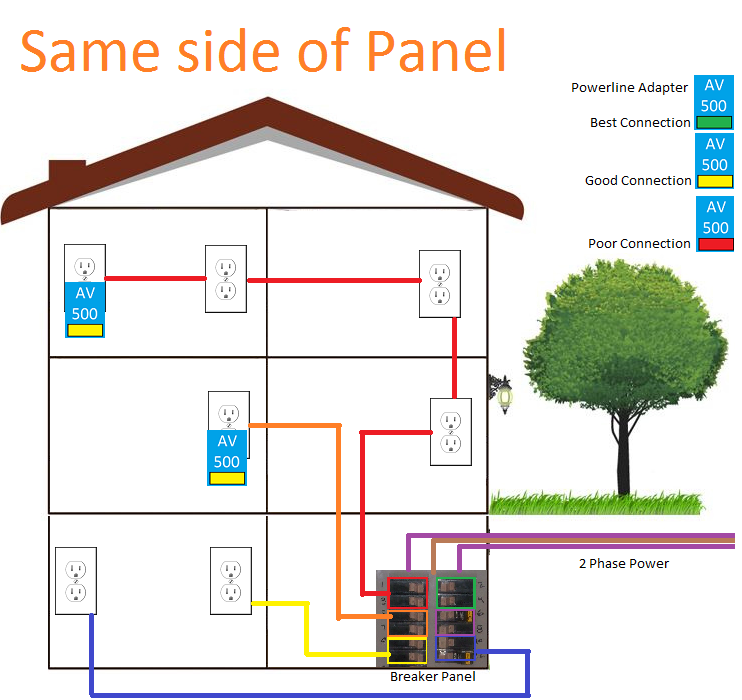
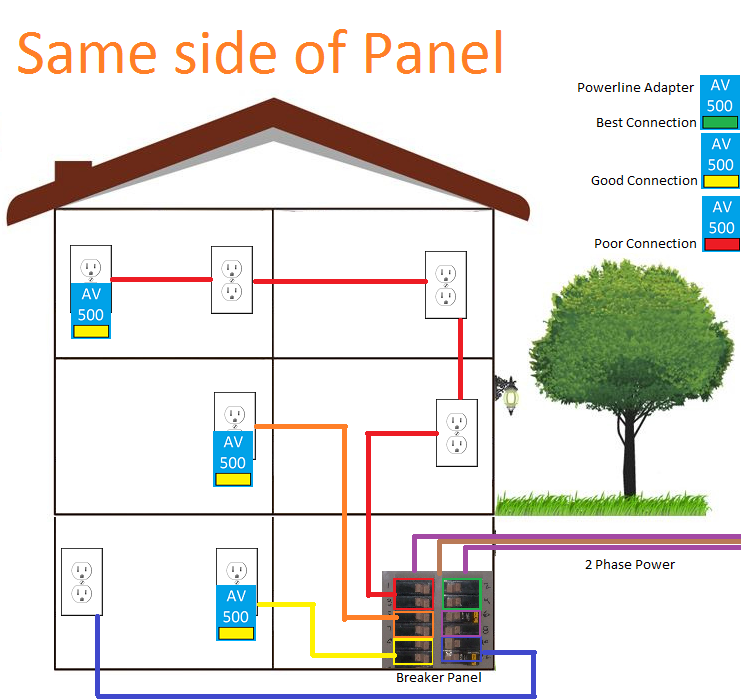

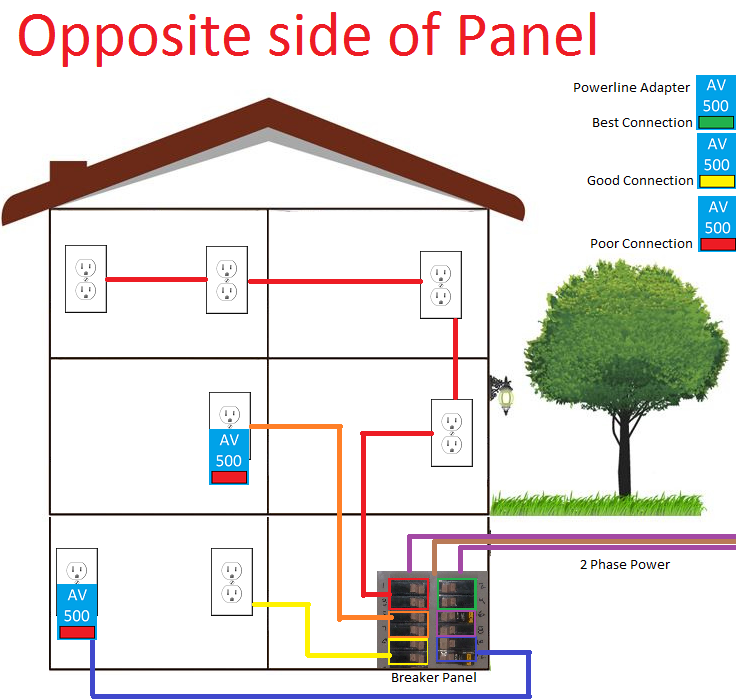
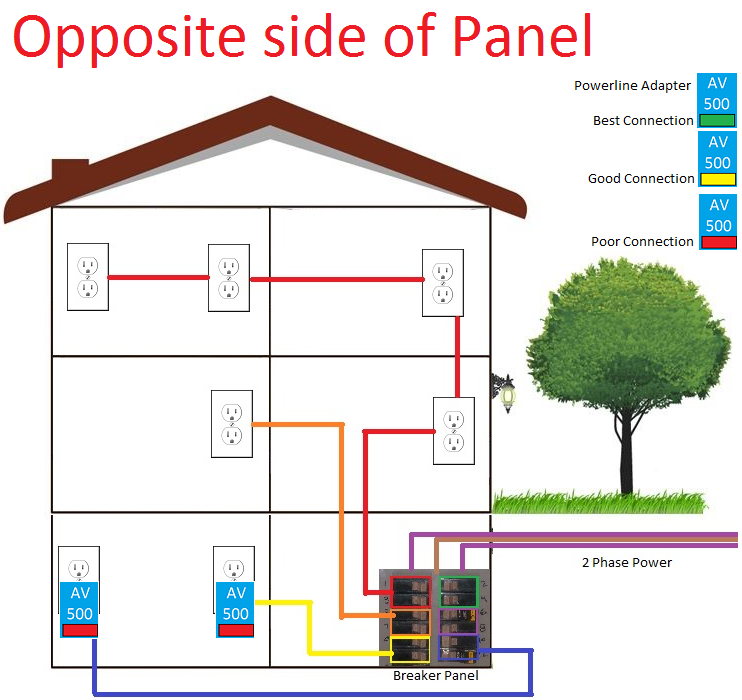
Notice that two outlets from the same room or floor may or may not be on the same circuit or same phase. This may not be obvious to the resident unless the circuitry has been mapped out. Trial and error may be necessary to find which combinations of outlets may work best.
Even though current Homeplug AV2 adapters indicate a maximum throughput of 500Mbps. In the best conditions you may only receive a usable connection rate of approximately 200Mbps. Adapters connected to different phases may only be able to achieve a usable service of 6-10Mbps
What if I can’t connect my Powerline adapters to outlets on the same phase?
You can install a ‘Power line phase coupler’ designed for home plug applications. These devices connect the multiple phases in the building so that powerline devices are able to communicate over them. The phase coupler gets installed directly to your electrical panel so a qualified electrician is necessary to install this device.
In worst case scenarios it may be more suitable to use a different technology/physical layer to transport your network over – such as Cat5e/Cat6 Ethernet, DECA (DirectTV Ethernet to Coax Adapter) for co-existing over satellite coax or MoCA (Multimedia over Coax Alliance) for co-existing over cable tv coax.
Hearsay and Rumors
Here are some unverified statements about powerline that may be useful:
- Powerline does not work as well over aluminum mains wiring.
-This is unverified and many sources indicate that powerline operates with no difference over aluminum wiring than copper. - Powerline devices work best when they are all oriented in the outlets the same.
-No significant difference has been experienced with different device orientation, but if you’re having issues it’s certainly not going to hurt to check/try this.

Thank you for this! All my questions on how these devices work were answered.